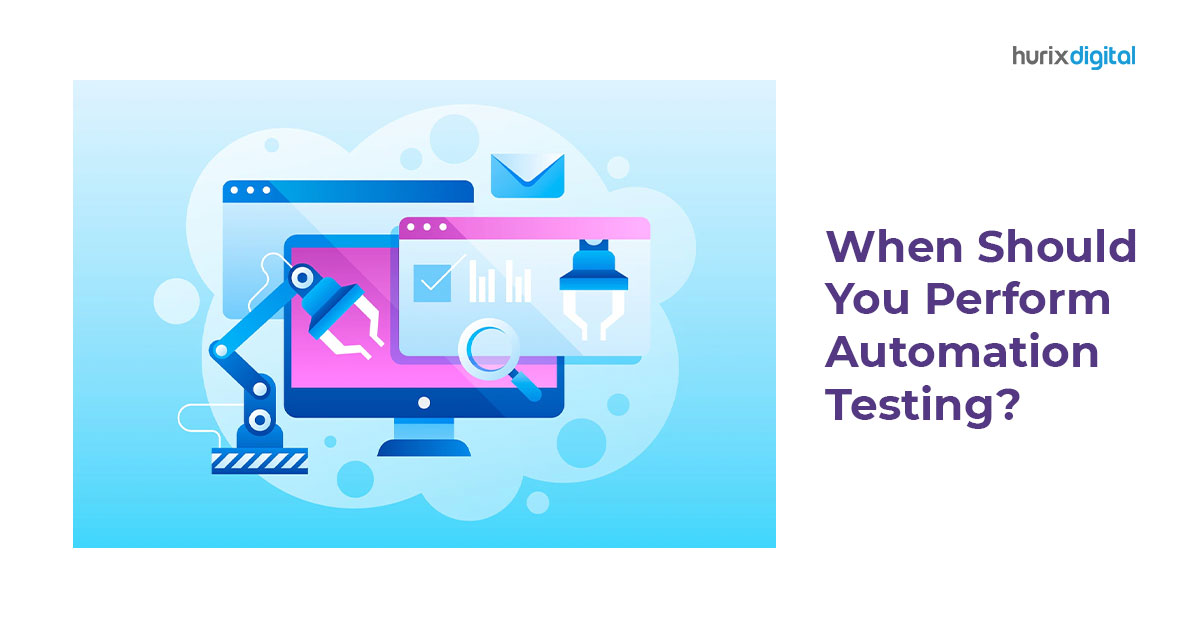
When Do You Need Automation Testing?
Summary
The article outlines the benefits of automation testing for new builds, complex projects, legacy code, frequent regression, unstable tests, and development efficiency.
Table of Contents:
- Introduction
- Six Key Scenarios to Automate Your Tests
1. Testing New Builds Regularly
2. Dealing With Complicated Projects
3. Projects Older Than 6 Months
4. Frequent Regression Testing
5. Unstable Test Modules and Repeated Scenarios
6. Saving Time During the Development Process - Conclusion
Introduction
Automation testing has become increasingly popular in recent years, especially because of its ability to verify that each component of the application works correctly without human intervention.
Automated tests run faster than manual tests because they don’t require a person working with them at specific times or locations (as long as they have internet access).
But when exactly do you need automation?
Top Six Key Scenarios to Automate Your Tests
1. Testing New Builds Regularly
If you have a new build to test every week, automation testing is the best way to get it done quickly and accurately.
For example, if your product has a certain number of features and you need to verify that all these features are working as expected on each build release, then manual testing would be far too long.
Manual testers could only test one feature at a time, and you’d have no way of knowing if other features might be broken because they were never tested! Instead, automation makes it possible for testers to quickly and repeatedly test all the available features in an automated manner.
That said, automation testing can also be used for manual testing. Automated software testers can run through scenarios that cover every possible condition and produce results in minutes rather than hours or days – huge time savings!
So if you want to get away from the tedious and time-consuming tasks of manually checking each UI element on a page, then automation testing is the solution for you.
2. Dealing With Complicated Projects
You’ve got a complicated process you want to test, and manual testing is out of the question.
What is the best solution?
Automation testing is a great way to test complicated processes because it allows you to design tests that can be run multiple times without ever having to change how they work.
Think about it: if your product has a complex user experience or depends on many other systems, manual testing will quickly become unwieldy – and potentially useless!
Also, automation testing isn’t just for websites. You can use it to test your products or applications across multiple platforms, including mobile and desktop.
Many companies find that they need automation testing to test their software because they have too much code running on too many different devices. Manual testing simply wouldn’t be able to keep up!
3. Projects Older Than 6 Months
The longer your project, the more likely it is to break. The more dated your project, the more time it takes to fix it. The larger and more complex your codebase becomes, the harder it is to keep track of all its edge cases and nuances.
This means that even if you do have unit tests in place, they may not be comprehensive enough to catch new bugs as they arise. This is especially true if those bugs are caused by changes in external dependencies (like updating an API or third-party library) which aren’t covered by unit tests at all!
The point here is: don’t wait until after six months into a project before getting started on automated testing! The longer you wait, the more time it takes to get back on track with your automated testing.
Automated tests are also easier to maintain than manual tests because they don’t require constant human attention – they can run in the background while you work on other things.
4. Frequent Regression Testing
If you have a project with frequent regression testing, automation is your best bet.
Automated tests can be run automatically on your build server and in parallel. You can also execute them on different machines or even on the cloud if your project has a heavy load.
With automated testing, you can get fast feedback on your code changes and make sure that they don’t break anything. This will save time and effort in the long run.
With a good set of automated tests, you can also refactor your code with confidence. Manual testing can be very time-consuming if your project has a heavy load and the runtime is slow.
Automation will save you from having to run each test individually – you can execute all tests at once!
5. Unstable Test Modules and Repeated Scenarios
When the test module is unstable or there is a repeated scenario to be tested.
For example, in a mobile phone application, if we want to test whether our app can record a video and save it in the local database, then this task needs to be done manually.
However, if we repeat this action hundreds of times every day until all users use it every day and report bugs in this function, then we should automate this task so that manual operations are not required when executing such tasks.
In the case of mobile phone applications, we can automate any test scenario that is repeated and stable. An example would be the launch of an application and clicking on a button to open the menu.
For example, if we are testing our application for bugs in its functions, then we should not automate this test because it will not help us determine whether there are any errors in the product or not.
6. Saving Time During the Development Process
Automation testing is a way you can save time during the development process.
With automation testing, you can test a large number of scenarios in an automated and repeatable manner. You can also use automation to test a large number of functions in an automated and repeatable manner.
Finally, it is possible with automation to test a large number of data sets using data-driven tests (DDT). This means that you can save a significant amount of time with the testing process for your projects by choosing automation testing.
Conclusion
Automation testing is the best way to test your app. It can be used at all stages of the development process, and it’s a great way to get started with automated testing if you’ve never done so before.
Plus, it saves you time and money by ensuring everything works as expected before releasing new builds or updates into production environments.
Looking for a QA solution for your business? We at Hurix provide some of the best quality assurance and automation testing services available today. Check it out now!
Also Read: Top 9 Benefits of Automation Testing

Currently serving as the Vice President of Technology Delivery Operations at HurixDigital, a prominent global provider of digital content and technology solutions for publishers, corporations, and educational institutions. With over 16 years of experience spanning EdTech and various domains, I hold certification as a SCRUM Product Owner (CSPO). My expertise includes operations, finance, and adept people management skills.






